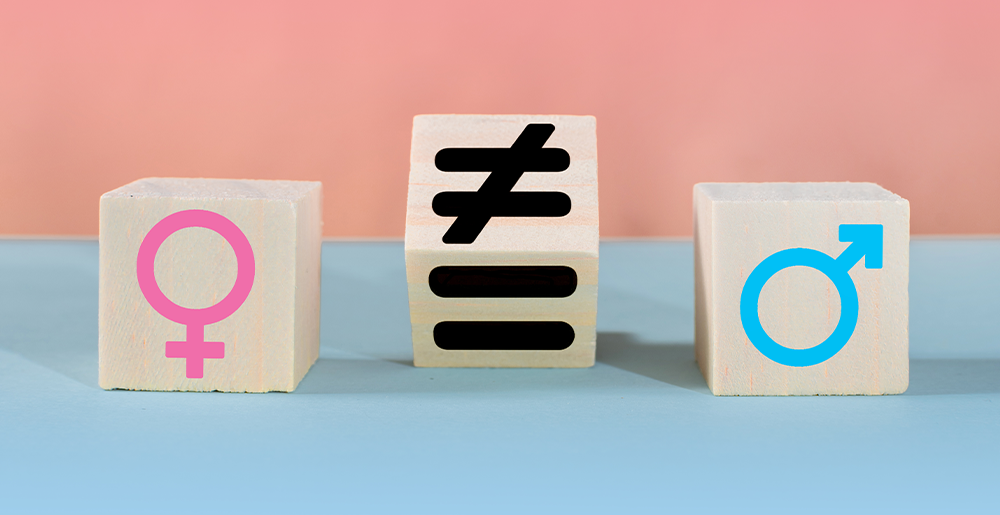In the EU women are on average paid 13% less than men, per hour. This equals to one and a half months of salary. As Europe marked Equal Pay Day a few weeks ago, NewsHub sat down with NCPE Commissioner Renee Laiviera to get a closer look at the local situation and what needs to be done for the gender pay gap to be closed.
What is Equal Pay Day and why do we still need to commemorate it in 2022?
Equal Pay Day contributes to raising awareness on the fact that women are still on average paid less than men across Europe.
Commemorating Equal Pay Day in 2022 is important since the gender pay gap persists, with an average of 13% in the EU27 and 10% in Malta (latest data for 2020) [1]. The gender pay gap not only leads to lower income when in employment, but also to lower pensions during retirement, contributing to the increase in the risk of poverty throughout. In addition, the gender pay gap can affect motivation and relationships at work negatively, ultimately impacting productivity and commercial success.
Locally, in which industries does the gender pay gap remain higher? How does the financial services sector compare?
In Malta, the gender pay gap is the highest in ‘Real Estate Activities’ (29.7%) and in ‘Financial and Insurance Activities’ (24.3%) [2]. Similarly, in the EU Member States where data is available, the gender pay gap is higher in the financial and insurance activities than in the business economy as a whole [3].
The Eurofound (2021) noted that despite the financial services sector being gender-balanced, the gender pay gap is high because “more men than women occupy some of the highest-paid occupations (such as specialised services managers and administrative managers) and because they receive higher wages than women within the same occupational category.” [4]
Did the Covid19 pandemic contribute further to the gender pay gap?
Prior to the Covid-19 pandemic the average gender pay gap across Europe was slowly narrowing. However, the European Institute for Gender Equality (EIGE, 2021) stated that the pandemic might reverse this trend in view that income losses were higher for women than for men. This is due to the fact that most of the sectors affected by the pandemic and respective lockdowns are feminised, which means that women are more likely to lose their jobs or to have their work hours reduced. In addition, across the EU Member States:
- women were less able to access the income support measures for those affected by the pandemic – women work in jobs or sectors that were not covered by such measures, and women were less likely to meet the eligibility criteria due to shorter or interrupted careers;
- low-paid workers were left in a more vulnerable situation. Across Europe 60% of minimum wage earners are indeed women;
- it is likely that the pandemic increased the risk of poverty and social exclusion, particularly for single mothers and their children [5].
“Gender-sensitive recovery needs to address the gender pay gap by promoting equal share of care responsibilities and by better valorising those working in frontline, low-paid and precarious jobs, such as carers, nurses and cleaning staff.” [6] (EIGE, 2021)
How would addressing skills gap benefit the reduction of the gender pay gap?
The average educational level of female employees across nearly all the Member States is higher than men. Nonetheless, this is not reflected in higher pay [7].
The work done by women tends to be undervalued since women’s skills are not, or not sufficiently, valued in pay structures [8]. In fact, highly feminised jobs tend to be undervalued, and around 24% of the gender pay gap is related to the overrepresentation of women in relatively low-paying sectors such as care, health and education [9].
More transparency in pay can enable female workers to understand better the evaluation of skills and job requirements in order to demand equal pay for women and men.
What else can be done to close the gender pay gap?
Pay transparency is crucial to ensure that employees and relevant stakeholders are aware of pay levels and are better able to address discrepancies. Increased transparency can reveal gender bias or discrimination in pay structures and enable appropriate action to safeguard equal pay. To this end, in 2021 the European Commission presented a proposal on pay transparency to ensure that women and men in the EU get equal pay for equal work.
Moreover, the gender pay gap can be further addressed through:
- Measures to tackle gender segregation in employment, such as promoting the participation of women in higher-paid fields which are male-dominated;
- Ensuring that there are no barriers for workers who would like to work full-time.
- Enabling women to advance in their careers. Unequal sharing of caring and family responsibilities between women and men tend to impact the hours in paid employment; and
- Tackling glass ceilings and promoting the participation of women in managerial positions.
Apart from the gender pay gap, what other challenges do women face in the workplace?
Other challenges can include discrimination in recruitment, employment conditions, career advancement and dismissal; discrimination due to family responsibilities, or else due to potential or actual maternity; sexual harassment; lack of flexibility in the working arrangements, and other differential treatments that curb equal opportunities and hinder the development of their potential.
[1] https://ec.europa.eu/eurostat/databrowser/view/EARN_GR_GPGR2__custom_3281751/default/table?lang=en
[2] https://ec.europa.eu/eurostat/databrowser/view/EARN_GR_GPGR2__custom_3288976/default/table?lang=en
[3] https://ec.europa.eu/eurostat/statistics-explained/index.php?title=Gender_pay_gap_statistics#Highest_gender_pay_gap_in_financial_and_insurance_activities
[4] https://www.eurofound.europa.eu/sites/default/files/ef_publication/field_ef_document/ef21039en.pdf
[5] https://ec.europa.eu/info/sites/default/files/aid_development_cooperation_fundamental_rights/annual_report_ge_2022_printable_en.pdf
[6] https://eige.europa.eu/publications/gender-equality-index-2021-health
[7] https://www.eurofound.europa.eu/sites/default/files/ef_publication/field_ef_document/ef21039en.pdf
[8] https://ec.europa.eu/info/sites/default/files/aid_development_cooperation_fundamental_rights/swd-2021-41_en_0.pdf
[9] https://ec.europa.eu/info/policies/justice-and-fundamental-rights/gender-equality/equal-pay/gender-pay-gap-situation-eu_en


